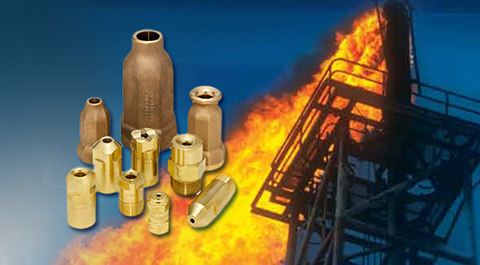Optimizing Fire Suppression
Research Study
In this study, we used CFD to assess a hydraulic nozzle's effectiveness in suppressing fire and reducing overall heat caused by fire emergencies.
In this study, we used CFD to assess a hydraulic nozzle's effectiveness in suppressing fire and reducing overall heat caused by fire emergencies.
Water mist via hydraulic atomizing nozzles continues to gain acceptance as a practical fire suppression agent. The fire protection industry is increasingly using CFD to model water mist formation, an atomizer's effectiveness in delivering adequate mist and the interaction of the flame with the water mist droplets. In order to better serve our fire suppression customers, we conducted a modeling research study to assess how effective overall fire suppression would be by comparing and modeling the drop size distributions of our hydraulic atomizing nozzles. In the end, we want to answer the question: can CFD help design, build, test and even certify a fire suppression system?
We chose three different nozzles : a swirl-type atomizer, a full cone nozzle and a spiral nozzle, and tested with water spraying at the same flow rate. The simulation is 2D and axisymmetric (the phenomenon is similar from one part to another of the axis), and was coupled with Discrete Phase Modeling and a Species Transport Model.
First, we executed a steady-state simulation, where a “fire pool,” with a heat of 210kW, was situated two meters under the injection point. Afterward, we completed a transient simulation for a total time of 50 seconds. In the time allotted, we simulated a 30 second fire heat increase, sprayed for 15 seconds and reheated for 5 seconds. Using drop size distribution data collected in our spray lab on each nozzle type, we were able to simulate these conditions with high confidence in the set-up and corresponding results.
After modeling the velocity, temperature and spray concentration of each nozzle under the operating conditions we set up, we discovered some promising results from the simulation. Comparing the three nozzles, the swirl type atomizer with the smallest Volume Mean Diameter (VMD) provided the highest evaporation rate and the most efficient heat absorption. Though the full cone and spiral nozzles have much greater drop sizes and those particles show greater ability to penetrate the high heat zone, the smaller particle sizes generated by the swirl type atomizer greatly reduce the overall heat, providing a better overall level of fire suppression.
While the swirl type atomizer provided the best overall level of fire suppression, additional considerations would need to be given to the ultimate goal of the individual fire suppression system. Is the system design intended as a suppression or extinguishing system? What level of temperature reduction is required for the hazard design? In light of these questions, further work will be conducted to broaden the scope of these simulations. This study was limited to axisymmetric simulation of a surface heat release rate environment. Additional studies are expected to incorporate combustion simulations in a 2D and further progress into 3D environments with multiple injection points.
